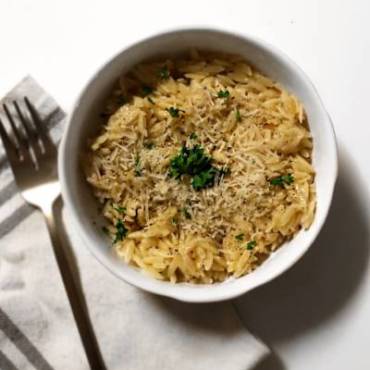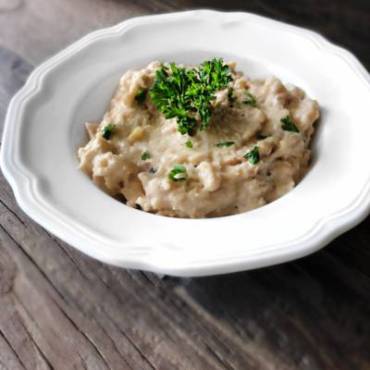If you ask any chef around what their least favorite question is, guaranteed the majority will answer, “What’s your favorite thing to cook?”.
You may be asking yourself, “Why? It seems like a simple enough question.”…
Well, I’m here to tell you it’s not.
Not even close.
We cook so often and so many different types of food, it can get kind of hard to narrow it down to a “favorite” thing. (I mean, come on, I’m not Oprah!) Plus, all chefs love to be inventive when it comes to food, so any “go-to dishes,” always end up with some sort of twist.
So, what’s my answer? Damn, I knew I’d have to answer. My usual answer is “healthy dishes.” Because I really do enjoy the challenge of making something healthy that also tastes really good (I mean, “healthy and delicious deserve each other,” am I right?!).
I recently did a private chef meal service for a friend of mine and she told me that although she had no doubt that I could cook, she was really impressed that all of the healthy options I provided actually had a ton of flavor!

But, I suppose I still haven’t answered the question, have I?
What’s my favorite thing to cook?
Okay okay I give up…
Poisson en Papillote.



Let me preface that this recipe, in no way did I create. I learned how to make this dish in culinary school.
Yes, the International Culinary Center deserves full credit for this dish—but hey you asked… Well, okay I guess I asked myself (but you know what I mean).
So, why is this my favorite?
O.. M.. G..
1. The presentation is so fancy you’re guaranteed to impress whoever you make it for.
2. The flavors that exude from this dish, again I say O.. M.. G.. and
3. A major part of our taste buds comes from aromas that we smell from food. When you cut open the parchment paper—take a big whiff. Can I say “OMG,” for a third time? No? Okay, then let’s go with mouthwatering instead.
So, what exactly is poisson en papillote? It literally translates to fish in parchment paper which eludes to the way it’s cooked. But, what IS poisson en papillote? Well, let’s find out…

Yields: 2 fillets
Prep Time: 20 minutes | Cook Time: 30 minutes | Total Time: 50 minutes
Ingredients:
For Tomato Compote:
4 plum tomatoes
1 tbsp olive oil
2 garlic cloves, minced
¼ onion, diced
For Mushroom Duxelles:
1 tbsp olive oil
¼ onion, diced
8-10 cremini mushrooms, diced
juice of ½ lemon
pinch of salt
For Vegetable Garniture:
1 carrot, julienned
2 celery stalks, julienned
½ leek, julienned
For Assembly:
2 snapper fillets
Sprig of thyme
Parchment paper
1 egg white
Splash of white wine
For Tomato Compote:
1. Bring a medium pot of water to a boil.
2. Make a small “x” in the bottom of the tomatoes and remove the core.
3. Once the water comes to a boil, add tomatoes. Right when you start to see cracks in the skins, remove the tomatoes. (This should only take a minute or two.)
4. Place tomatoes in a bowl filled with ice water to stop them from cooking.
5. Heat 1 tbsp olive oil and garlic in pan over medium heat until fragrant. Add onions and cook ~ 2 minutes.
6. Once cool enough to handle, remove skins of tomatoes with a knife.
7. Cut tomatoes in half and remove the seeds with your finger. Coarsely chop tomatoes.
8. Add tomatoes to garlic, onion mixture. Partially cover and cook on low heat ~20 minutes
For Mushroom Duxelles:
1. While tomatoes are cooking, heat 1 tbsp olive oil in pan over medium heat until fragrant. Add onions and cook ~ 2 minutes. Add mushrooms and a pinch of salt. Cover and cook ~ 20 minutes, stirring occasionally until mushrooms are tender.
For Vegetable Garniture:
1. While tomatoes and mushrooms are cooking, place julienned carrots, leeks, and celery in a pan and fill with water. (The water should be about halfway up the vegetables.)
2. Cover and cook on medium heat ~10 minutes or until tender.
For Assembly:
1. Preheat oven to 450°.
2. Fold ~2 feet of parchment paper in half. With scissors, cut paper (from open side) so that it resembles a heart when unfolded. (see above pictures)
3. Unfold. On one side of the fold mark, place ½ mushroom mixture and ½ tomato mixture side by side.
4. Top with snapper fillet.
5. Using ½ the vegetables, arrange a layer of celery, carrots, and leeks side by side on top of the fish. Top with a sprig of thyme. Moisten with a few splashes of white wine.
6. Repeat this process with remainder of ingredients on a second sheet of folded and cut parchment paper.
7. Brush edges of parchment paper with lightly beaten egg white. Fold paper in half (covering the fish) pressing edges together to seal. Brush edges again with egg white and starting at the bottom, make a series of short folds over and over until you reach the top of the parchment paper. Brush again with egg white and repeat folds, twisting the bottom to seal completely (the twist creates a “tail” so that the end result of the paper resembles a fish).
8. Bake at 450°X ~7 minutes.
9. Serve in parchment paper, and cut with scissors at the table so the open side is facing the person eating the dish.
The Cook’s 2 Cents:
· Leeks (as are all root vegetables) are very dirty… Unless you like to feel grit in your teeth during dinner, once you julienne the leeks you have to wash them (after you cut them not before!). Once you’ve julienned them, fill a bowl of water and dunk the leeks in a few times to rid them of their dirt.
· While the tomato compote is cooking, keep an eye on it. If it looks like the liquid has evaporated before the tomatoes have finished cooking, you may need to add a little bit of water to the pan so they don’t burn.
· The mushrooms need salt so they release their water content. If you don’t add salt, the water won’t be released and they tend to burn before they’re finished cooking.
· When cooking the vegetable garniture, try and keep the different vegetables separate in the pan. This will make it easier when assembling the dish for baking.
· Obviously, I’ve made adjustments to this recipe from the school’s (there’s a lot more butter, salt, and oil in theirs ha!). One adjustment is that the vegetable garniture originally calls for butter when cooking, but I’ve found that it doesn’t really need it. Feel free to add it though if you’re not counting calories.
· If you can’t use wine in assembling the dish, you can substitute water instead. It’s really just so that it steams the fish while it bakes. You DO need some liquid in the parchment paper though, so don’t skip this step.
· One of the points in cooking this dish in parchment paper is so that the vapor created during the cooking process is entrapped and the paper puffs up. It’s served in the paper and cut at the table so the diner can enjoy the aroma that is released when the paper is cut open.





